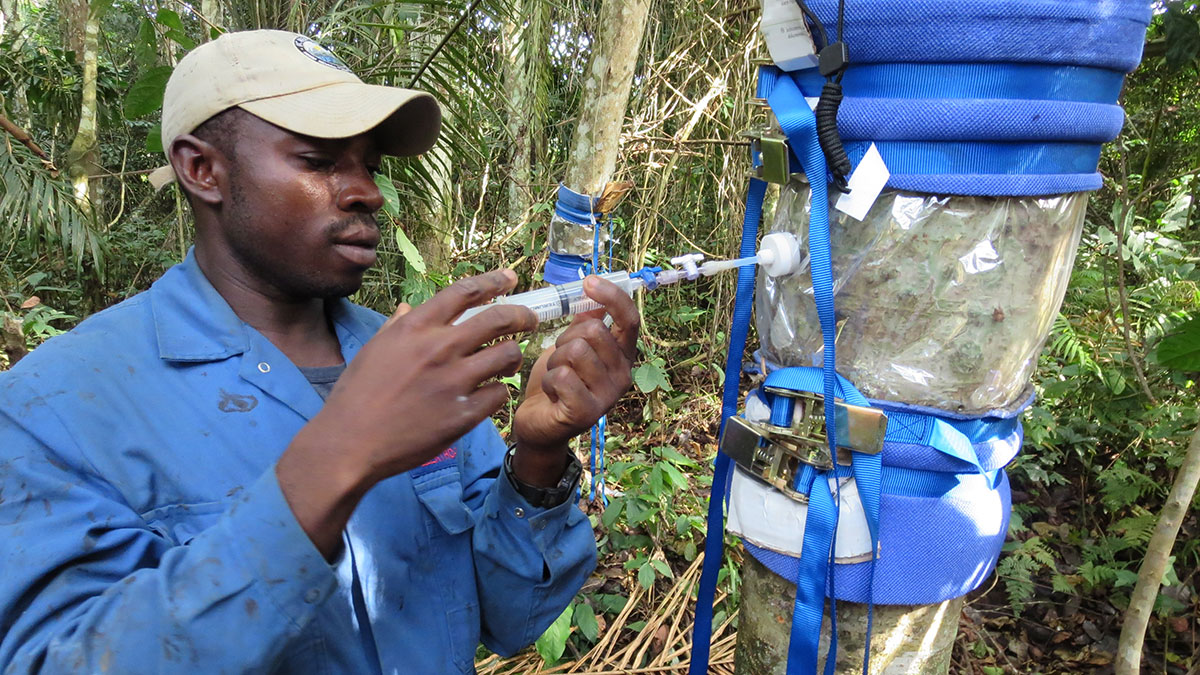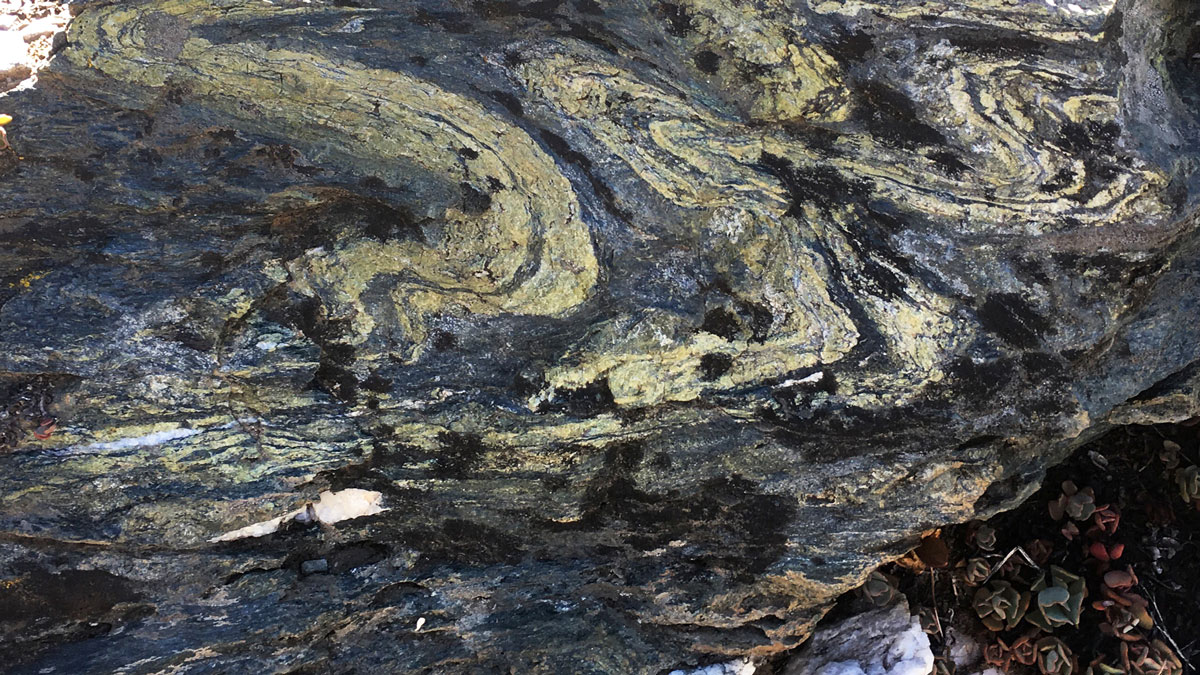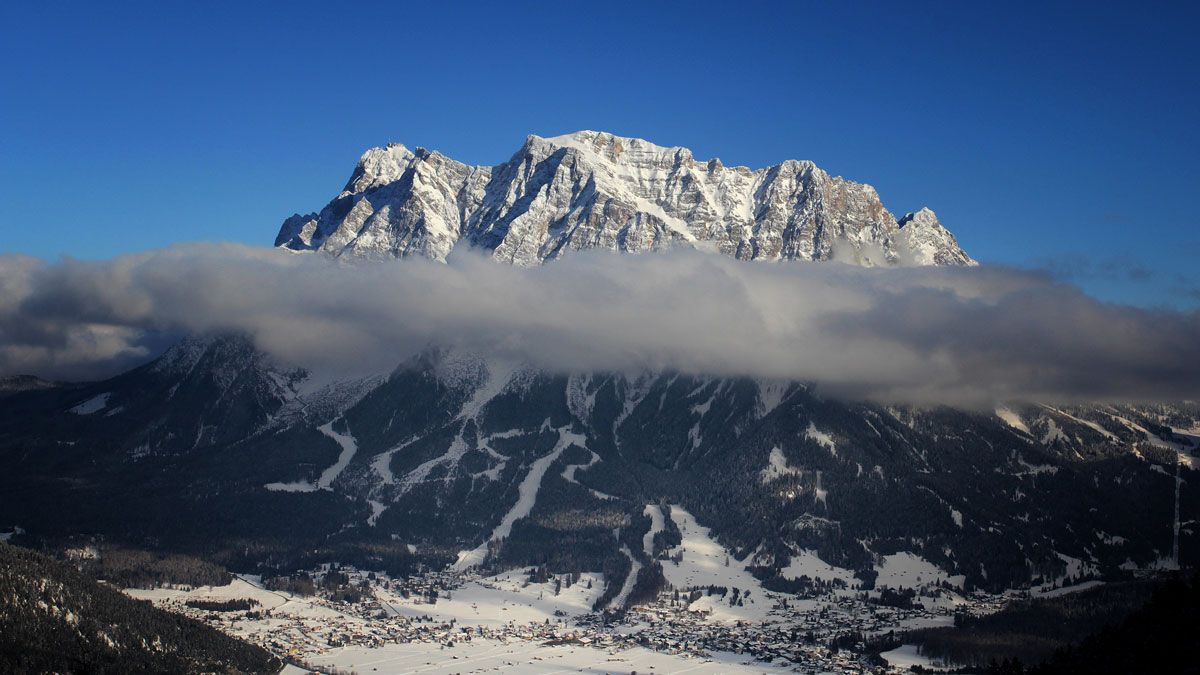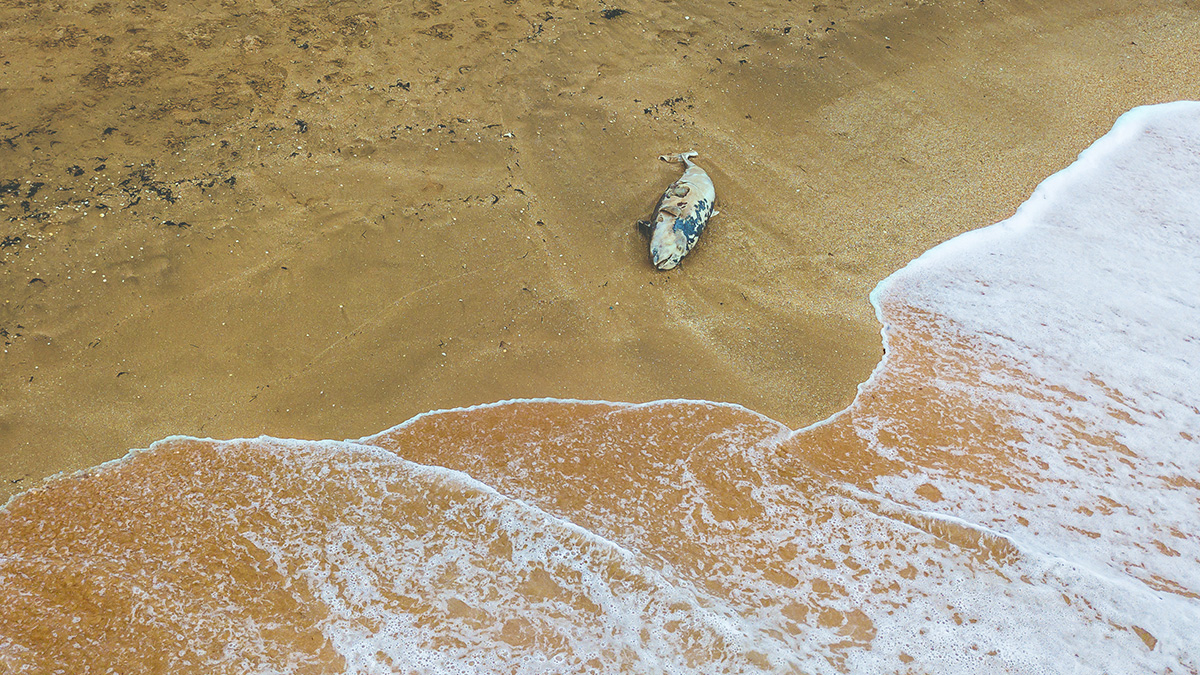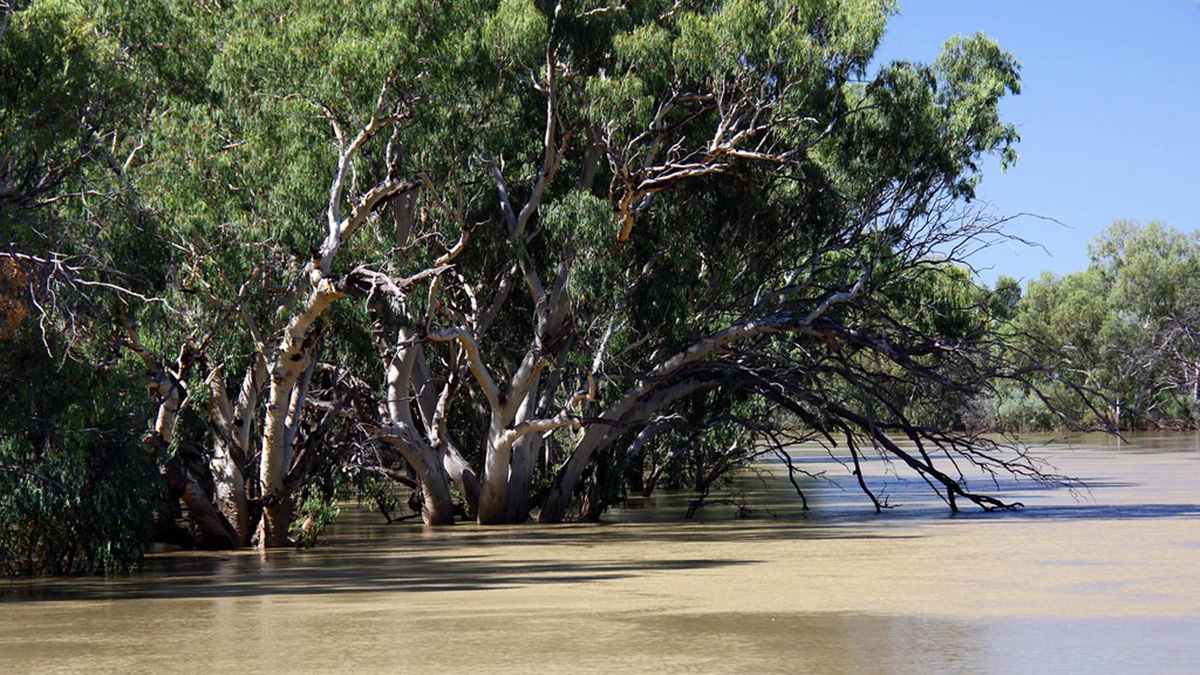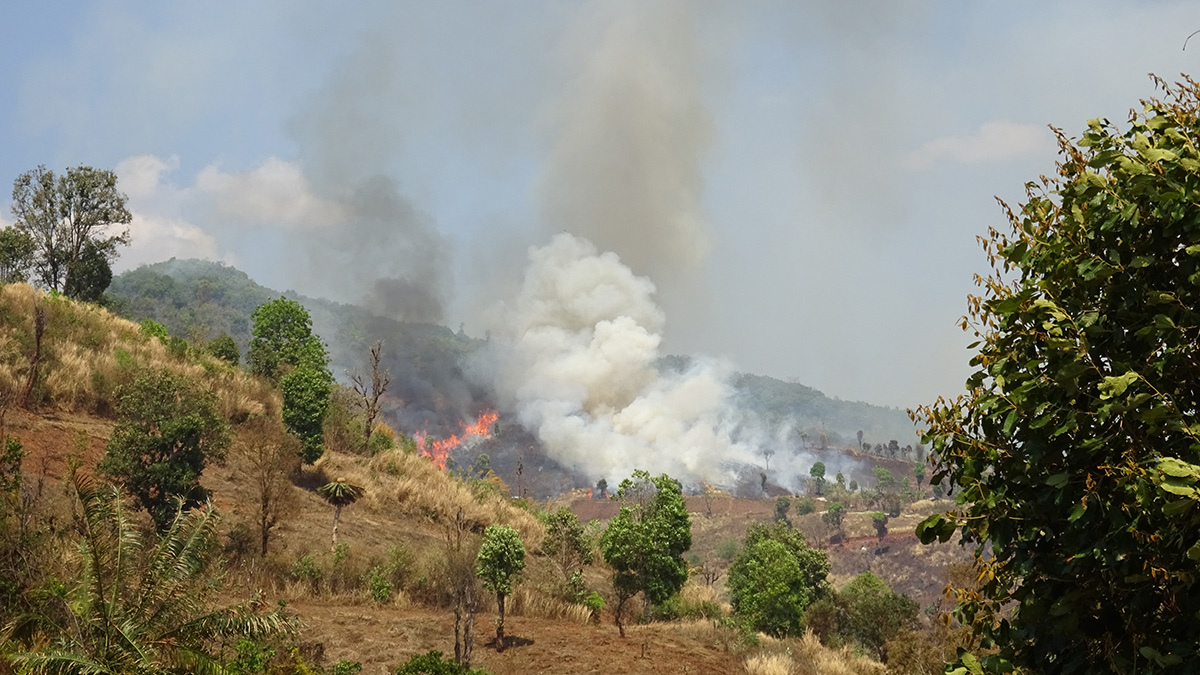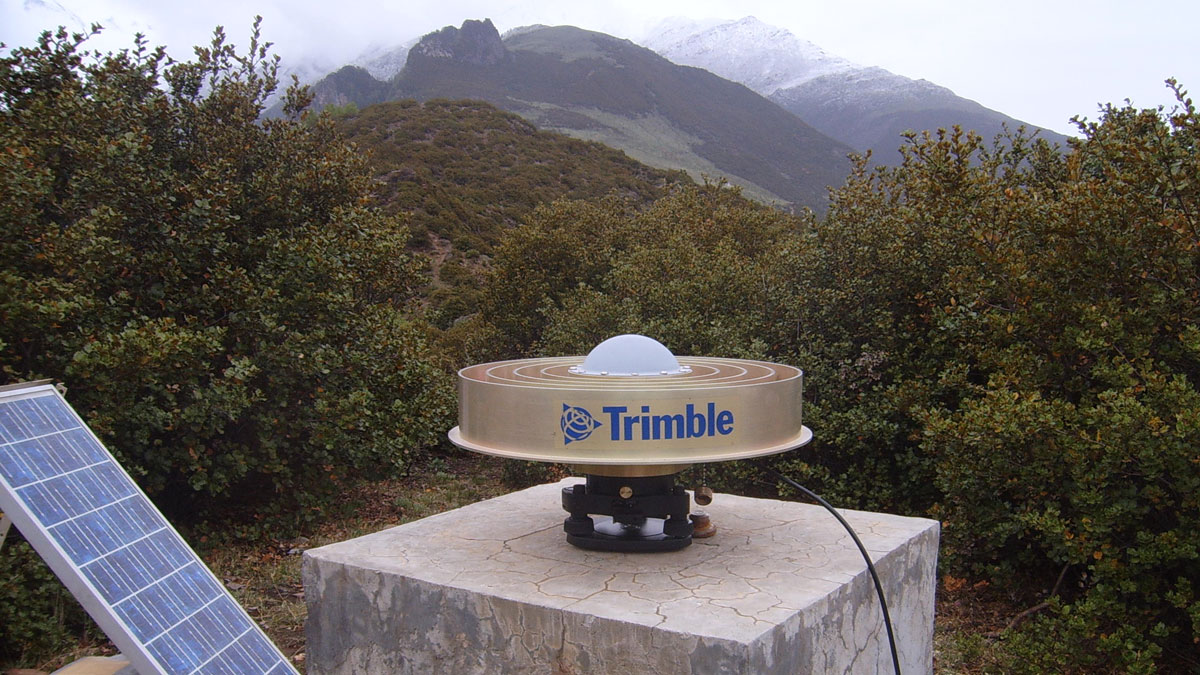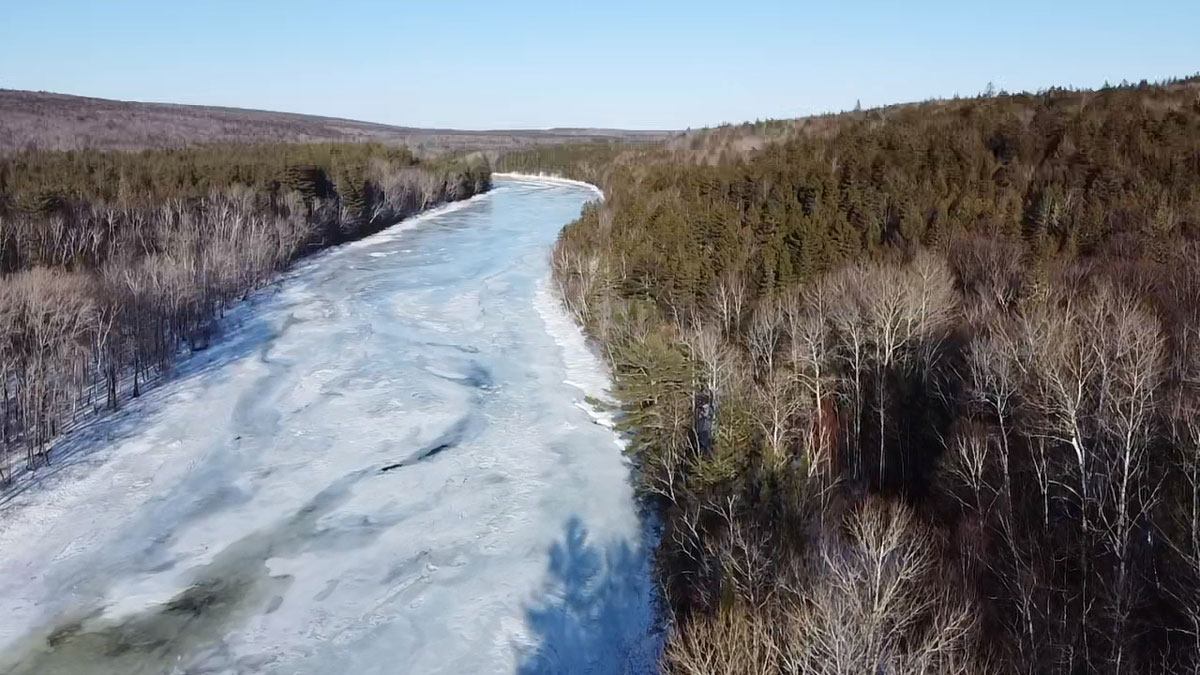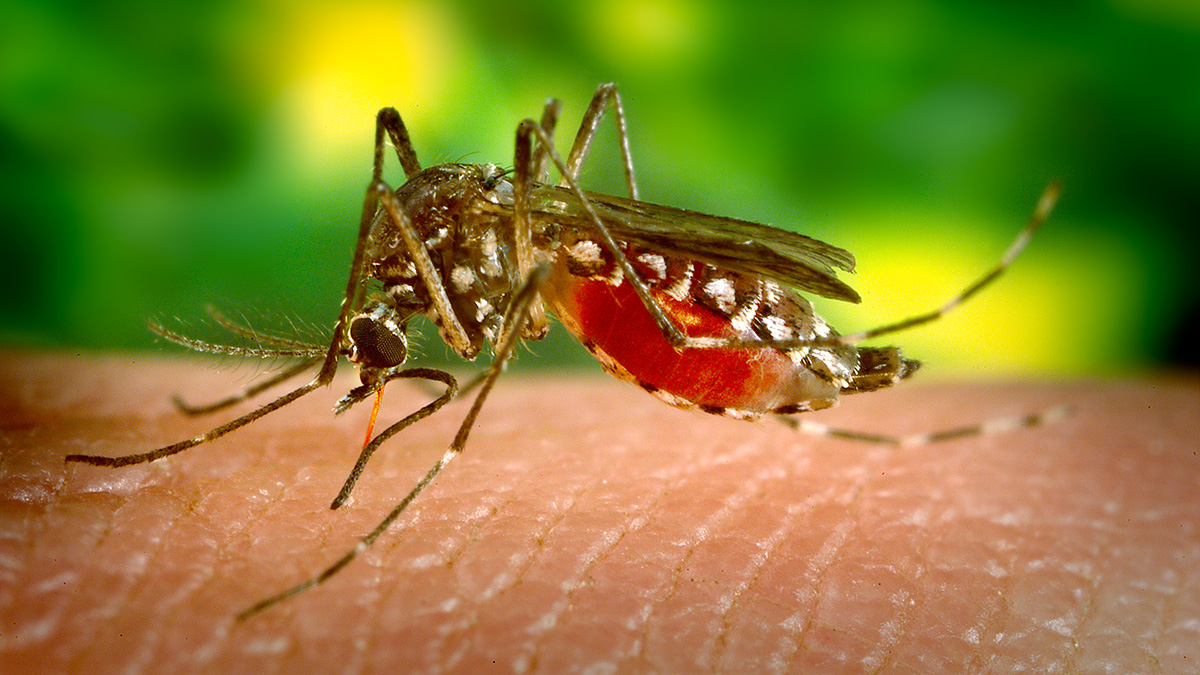The microwave radiometer aboard NASA’s Juno spacecraft reveals the hidden atmospheric circulations at work deep below Jupiter’s colorful clouds.
Research Spotlights
Research spotlights are plain-language summaries of recent articles published in AGU’s suite of 24 journals.
Exploring Methane Emissions from Africa’s Tropical Forests
Global methane budgets suffer from a lack of field studies in African forests, but new research sheds light on methane emissions and uptake from upland forests in the Congo Basin.
Unearthing the Cause of Slow Seismic Waves in Subduction Zones
Researchers look to the fossil rock record to unearth the driving forces for variable seismic speed through subduction zones.
Seismology: A Promising Tool for Monitoring Permafrost
Passive seismic data from a station atop Germany’s highest peak reveal a 15-year record of permafrost degradation, suggesting that this technique could be used for long-term environmental monitoring.
Wind and Ocean Currents May Contribute to Mass Dolphin Strandings
Coastal wind patterns correlate with mass strandings of dolphins, suggesting that storm-induced upwelling could be influencing cetaceans’ behavior.
Identifying the World’s Most At-Risk River Basins
Major river basins around the world, including the Amazon, may be hot spots for ecological shifts as the planet warms.
Support for a “Jelly Sandwich” Model of the Tibetan Plateau
Computer modeling constrained by positional data collected in the aftermath of the 2008 Wenchuan earthquake indicates the lower crust is less viscous than the upper mantle below it.
River Ice Can Shape Watershed Ecology
As river ice cover decreases, the physical and biological changes to river ecosystems vary with the watershed characteristics and river size.
App Tracks Harmful Mosquitos with Help from Crowdsourced Science
While collecting data using an app, volunteers have the chance to support research and fight mosquito populations on the ground.


